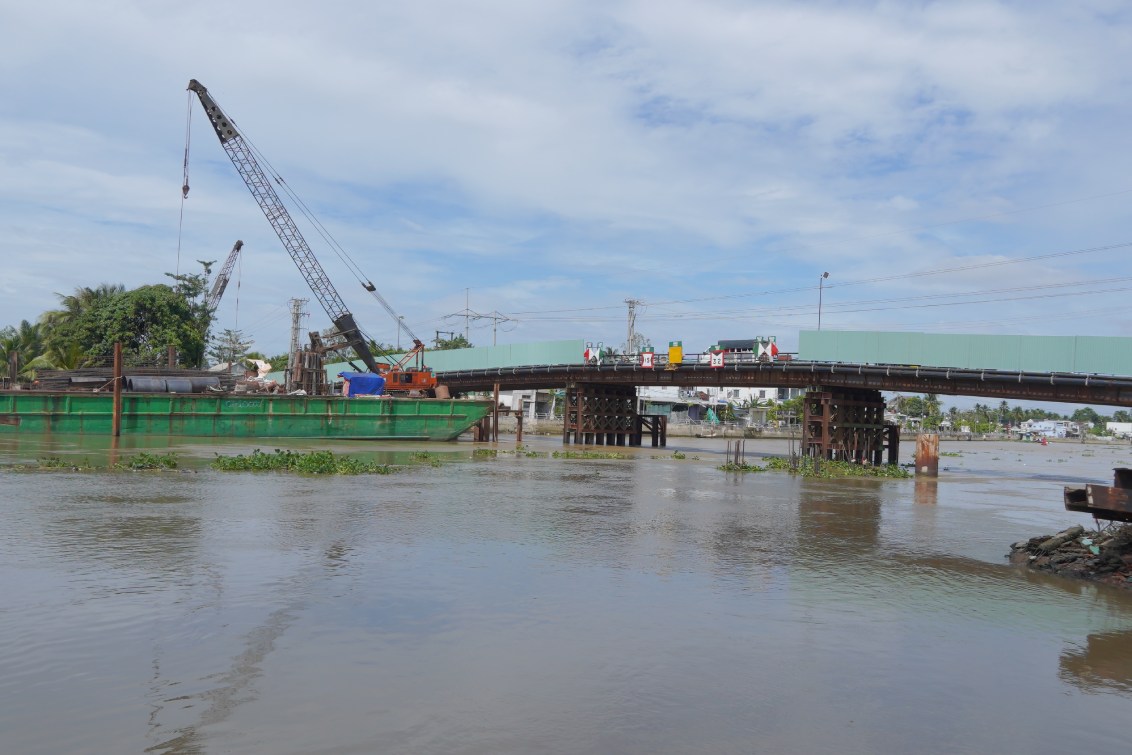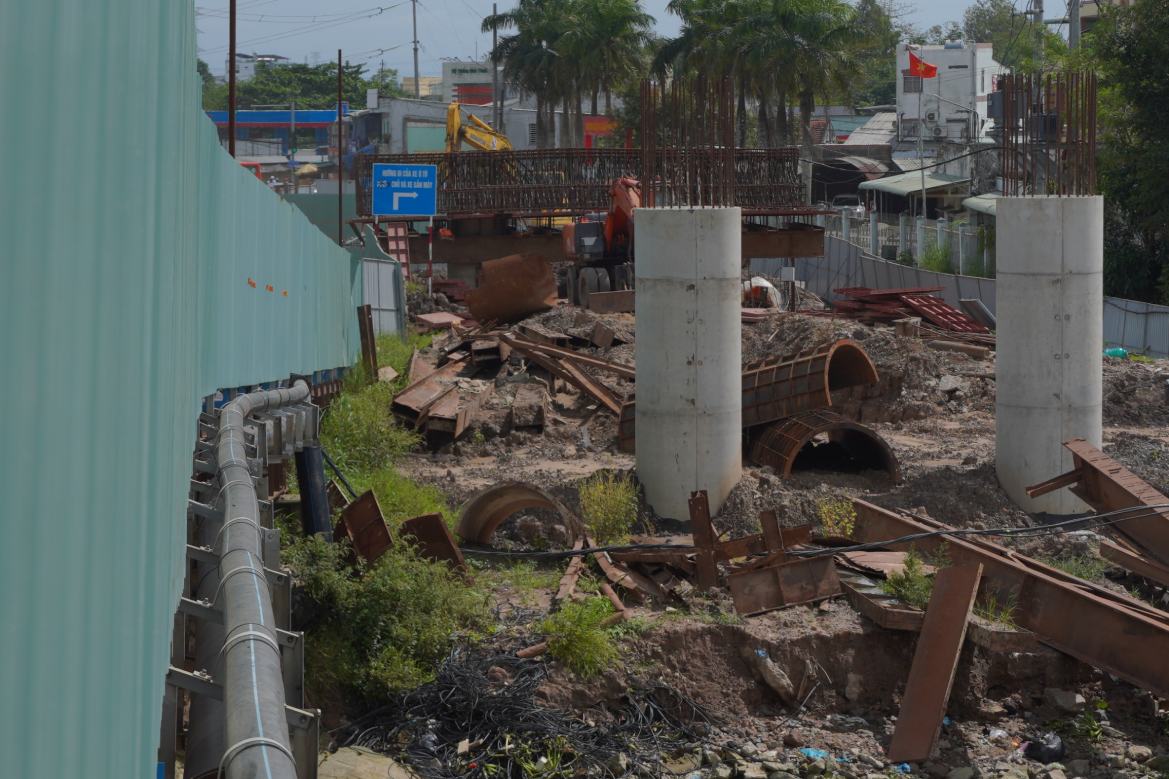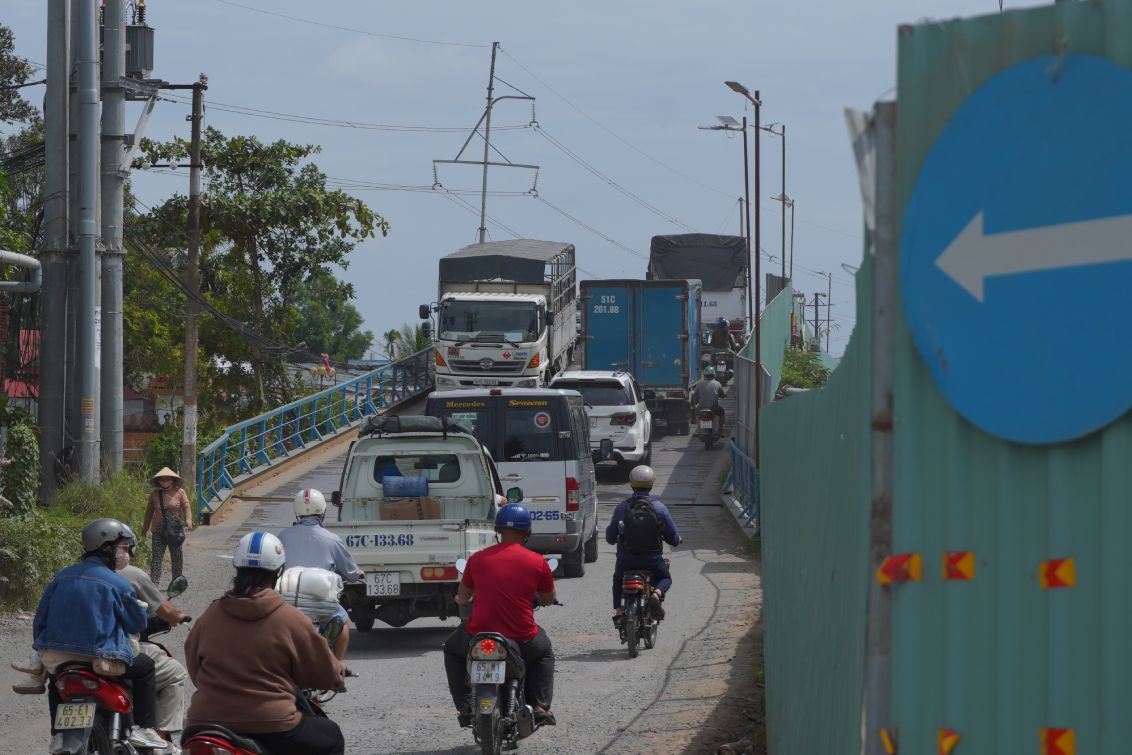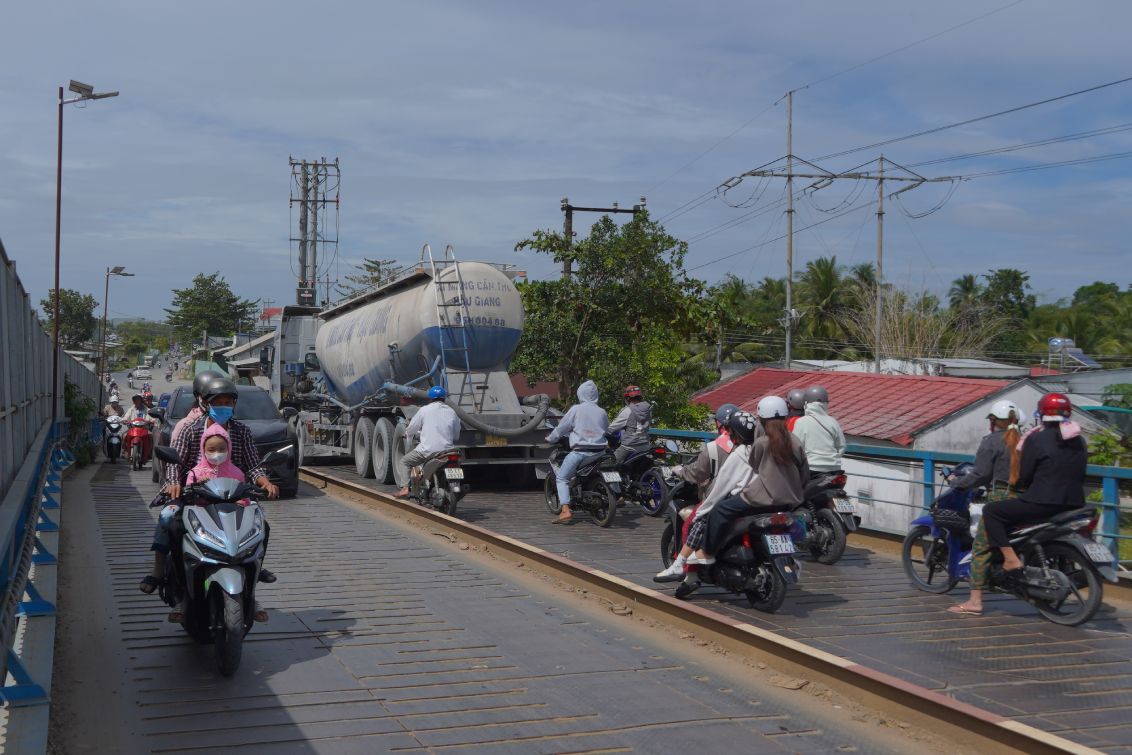Speaking to Lao Dong Newspaper reporter, Mr. Nguyen Hoang Viet - Director of the CD-XL02 package Management Board (Chief Company 873 - Traffic Construction) said that the O Mon bridge project is facing the biggest difficulties in the area of pothole 12, where there are still some households that have not handed over the site, making it impossible for the construction unit to drill and fill the piles.

According to Mr. Nguyen Hoang Viet, the entire project still has 7 households and the site handover has not been completed. It is expected that by the end of November, these cases will be enforced for handover. However, if the site is handed over immediately afterwards, mobilizing construction to speed up will not be able to help the project open to traffic before December 31 as planned.
Up to now, the project has reached about 70% of the volume, but all remaining items depend on the site clearance progress.
Mr. Nguyen Hoang Viet also said that if the bridge abutments are not completely cleared, the contractor cannot drill and fill the bridge abutments.

The contractor's representative informed that the project will generate capital due to many reasons: high sand and stone prices; two temporary routes at the beginning of demand were calculated to be used for 18 months but in reality, they have been extended much, causing maintenance and repair costs to increase sharply.
In addition, the costs are unpredictable, such as ensuring traffic due to the actual traffic volume being higher than the initial survey. Large trucks, even exceeding the load, often travel, causing the road to temporarily deteriorate rapidly, forcing continuous repairs. The total estimated capital is 15-20 billion VND.
Mr. Nguyen Hoang Viet added that after the site is cleared, the unit will focus on maximum human resources and equipment, and at the same time requested the investor to support to speed up the progress, striving to complete by April 30.


Reporters' records show that O Mon temporary bridge is experiencing many problems that directly affect traffic safety. The bridge surface is narrow but many types of vehicles must be exploited at the same time, leading to prolonged congestion at both ends of the bridge, especially during rush hour. The temporary bridge is also under great pressure, including overloaded vehicles, affecting the structure.
Notably, the bridge area is also flooded during heavy rain. The slope of the Thot Not approach bridge is often deeply flooded, causing vehicles to lose visibility, have difficulty moving and pose a potential safety risk.
Mr. Nguyen Ho Dang Khoa (O Mon ward, Can Tho city) who often travels across the temporary bridge shared that congestion has become a familiar situation every day.
According to Mr. Khoa, the large traffic volume while the bridge surface is small makes the movement slow, affecting the daily life, work and going to school of students. The continuous traffic of heavy trucks also caused vibrations, causing people to worry about the safety level of the temporary bridge.
The new O Mon Bridge was built on the old bridge location, with a total investment of more than 135 billion VND, a level III road bridge project, with a bridge surface of 12m wide, including 7 spans, 3.5m clearance. This is one of 5 bridges under the project of Raising the clearance of road bridges across the national inland waterway phase 1 (Southern area), invested by the Maritime and Waterway Project Management Board. The completion time is expected to be at the end of December 2025.
The current temporary bridge is a 7- spans iron bridge, built parallel to the old bridge to serve traffic during the construction period.











